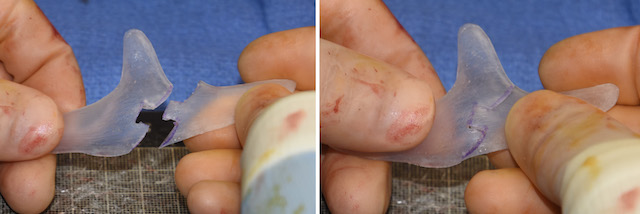The custom design approach to cheek augmentation allows for an extended and much more versatile midface effect for many patients. Many custom cheek implants become infraorbital-malar designs for a combined undereye and cheek bone enhancement. This is better for many patients as a weaker cheekbone is often associated with undereye hollows given that the bones involved are developmentally and structurally connected. (zygomatico-orbital complex)
When surgically placing custom infraorbital-malar implants the lower eyelid is the most frequent incisional location. This has a placement advantage over an intraoral approach given that it provides linear access to both the infraorbital and malar parts of the implant…which is largely a long linear shape. As such it lessens the likelihood of implant malposition of both the medial infraorbital and very lateral zygomatic arch ends of the implant.
When using a lower eyelid incision for custom infraorbital-malar implant placement it is really a modified lower blepharoplasty approach best described as a hemi-lid incision. This is where the inner end of the incision does not cross the vertical pupillary line and the lateral canthal extension is but a few millimeters long. While very small and seemingly incongruous with being able to place such a large implant length, the flexibility of silicone custom implants permit successful placement.

The approach of disassembling larger facial implants and then re-assembling them inside the patient is a classic ‘ship n the bottle’ concept. The key is in creating a type of split that is structurally stable once put together in the patient. This is why a completely straight line cut is not done…which would only be stable if screw fixation on both sides of the implant split was used.
Dr. Barry Eppley
Indianapolis, Indiana





